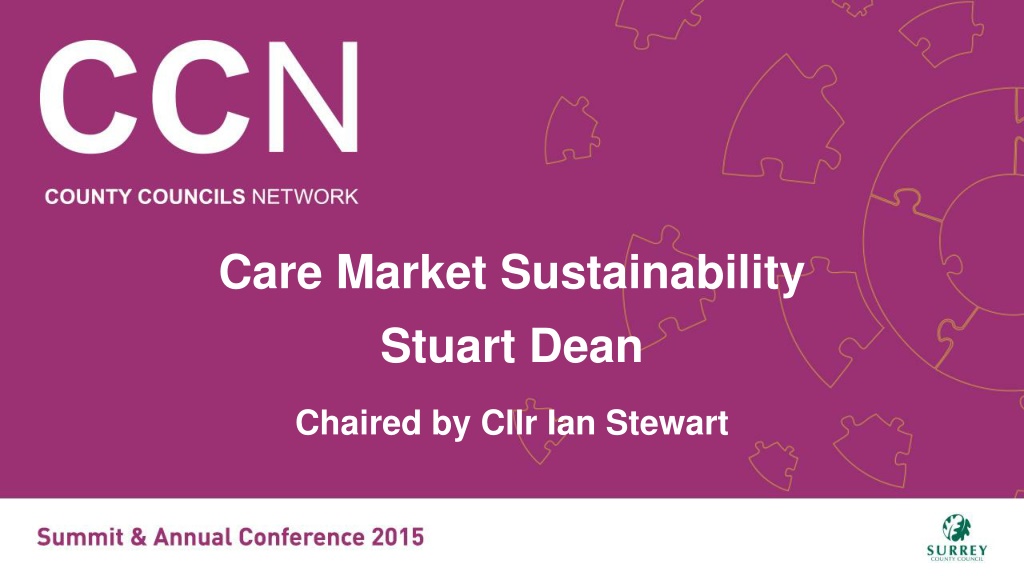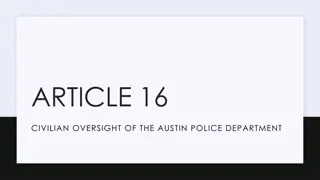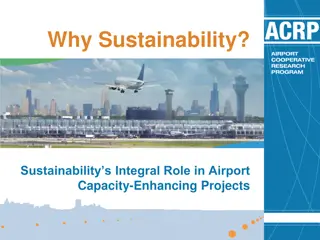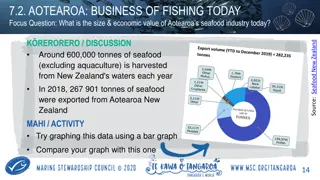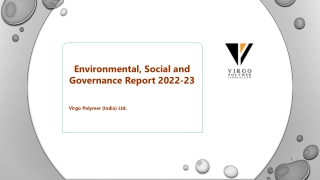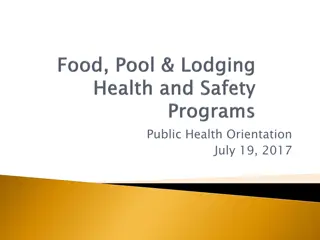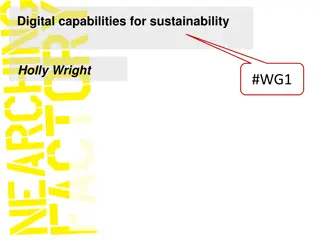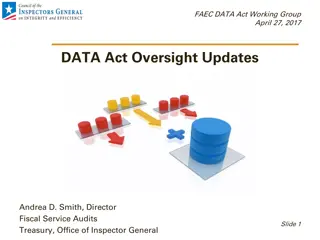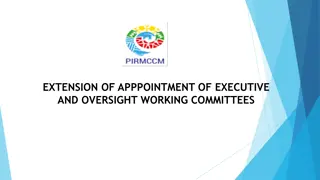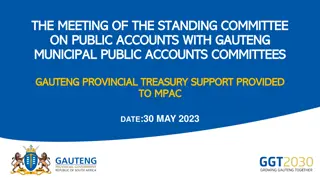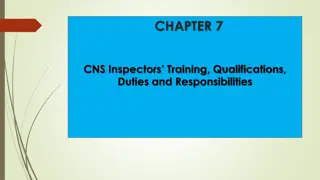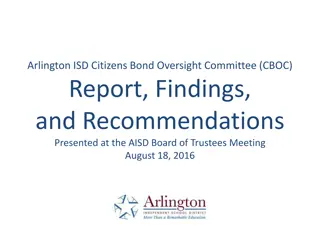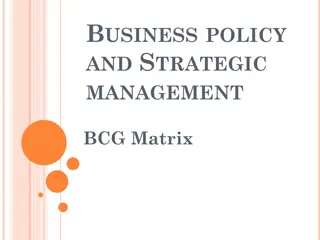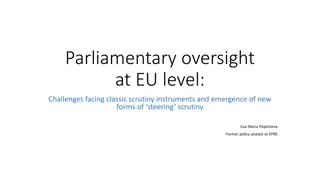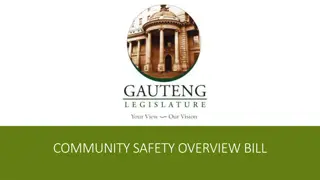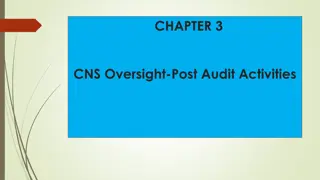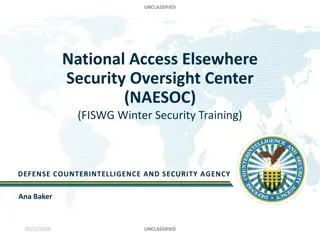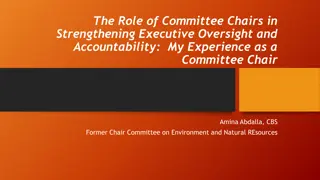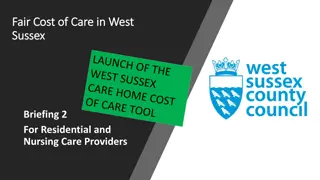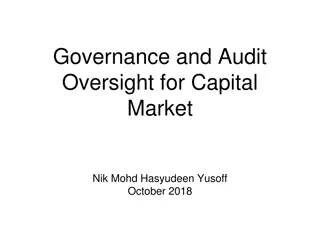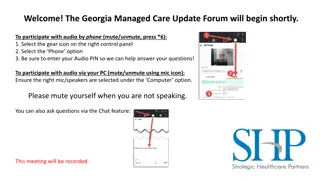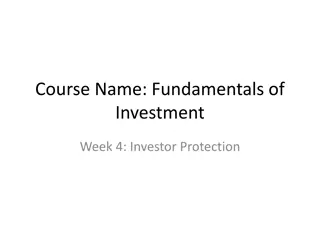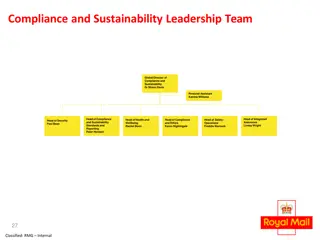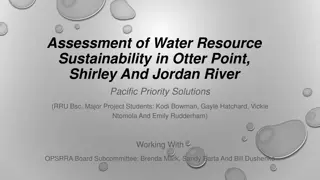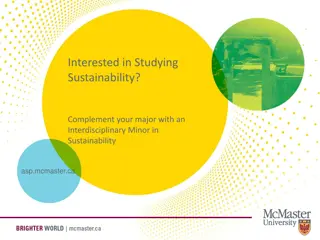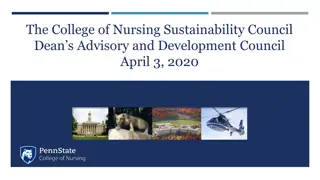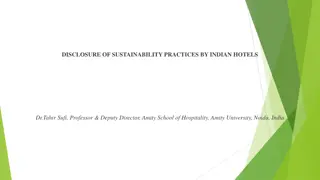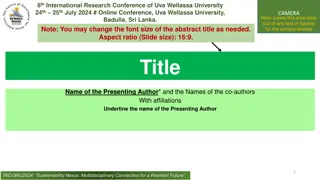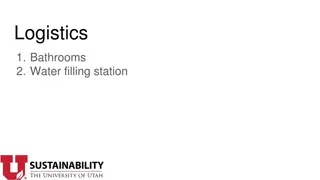Market Oversight and Sustainability in Care Industry
The presentation discusses market oversight and sustainability within the care industry, emphasizing the need for a clear relationship between quality of care and financial stability. It outlines the objectives of market oversight, which include preventing crises like Southern Cross, protecting vulnerable individuals, monitoring provider finances, and enabling a coordinated response in case of failures. The scheme launched in 2015 covers various residential and non-residential providers in England, with 44 corporate providers included. Key players in the market oversight advisory group are highlighted, shedding light on the structure and purpose of the team.
Download Presentation

Please find below an Image/Link to download the presentation.
The content on the website is provided AS IS for your information and personal use only. It may not be sold, licensed, or shared on other websites without obtaining consent from the author. Download presentation by click this link. If you encounter any issues during the download, it is possible that the publisher has removed the file from their server.
E N D
Presentation Transcript
Care Market Sustainability Stuart Dean Chaired by Cllr Ian Stewart
Market Oversight Stuart Dean 17th November 2015 CCN Annual Conference 2015 2
Stuart Dean Director, Corporate Provider & Market Oversight 3
Team Structure Market Oversight Advisory Group Stuart Dean Director, Corporate Provider and Market Oversight Market Oversight Panel Segun Oladukon Peter Holton Howard Sereda Head of Market Oversight Head of Inspection - Corporate Inspection Head of Market Oversight Nick Britten Corporate Provider Manager Corporate Provider Manager Market Oversight Manager Market Oversight Manager Business Support Coordinating Officer Corporate Provider Inspectors Business Support Coordinating Officer Corporate Provider Inspectors 4
Why Market Oversight? Clear relationship between quality of care and finances 5
Objectives Market Oversight aims to: Spot if a Southern Cross could happen again Protect people in vulnerable circumstances Monitor finances of difficult to replace providers Provide early warning to local authorities Assist in co-ordinating the system response if failure occurs Market Oversight is not there to: Protect providers from failure Pre-empt failure through disclosure of information 6
Overview Scheme went live on 6/4/15 and captures both residential and non- residential providers. Regulation only captures services provided in England. Currently 44 corporateproviders included in the scheme. These cover around 400 registered providers which deliver services from about 4000 locations (30% of all care home beds in England). Inclusion in scheme is a reflection of size, not risk of failure. Specialist providers can be nominated via a DH panel already held with no additional providers being proposed. 7
Providers Currently Included 44corporate providers arein the scheme Acromas Caring Homes HC One Mears Care Royal Mencap Society Agincare City and County Home Farm Trust Methodist homes Runwood Akari Care Community Integrated Care Housing and Care 21 MiHomeCare Sanctuary Care Anchor Trust Creative Support Ideal Care Homes Minister Care Sevacare UK Avery Dimensions Leonard Cheshire New century Sunrise Senior Living Barchester Direct health Leyton Health Care Orchard Care Homes United response BUPA group Embrace Life Style Care plc Order of St John Care Trust Voyage Care UK Excelcare Holdings Lifeways Priory Group Westminster Homecare Carewatch Four Seasons Maria Mallaband Radis 8
Market Oversight Operating Model Step 1 2 3 4 5 6 Regulatory action & engagement Formal notification to LAs Provider engagement on risk Entry to scheme Regular monitoring Further risk analysis Activity If concerns identified and addressed Key: Assessment of risk to financial sustainability (all provisional) no cause for concern/very low risk possible risk/medium risk likely risk/high risk risk clearly identified very high risk 9
Steps 4 - 6: Tools Available to CQC If elevated risks are identified from financial and quality indicators, CQC will use tools to obtain further information before assessing if failure is likely Regulatory action and engagement Formal notification to LAs Provider engagement on risk Activity Tools Additional financial information requests Independent Business Review Notify relevant LAs Risk assessment meeting b e g a More frequent quality inspections Risk Mitigation Plan c f Key stakeholder engagement d 10 10
Step 6: When does the CQC have to notify LAs? Paragraph 56(1) of the Care Act 2014 defines the point where the CQC s duty to formally notify the LAs is triggered. Legal definition CQC interpretation There are three conditions that have to be satisfied: Where the CQC is satisfied that a registered care provider to which the market oversight scheme applies is likely to become unable to carry on the regulated activity in respect of which it is registered because of business failure 1. Business failure; 2. A registered provider is unable to carry on a regulated activity - a service or activity will cease; and 3. It is likely that both 1 and 2 may happen; 11 11
Step 6: Satisfying the Likely condition CQC s interpretation of likely is On a balance of probabilities a registered care provider may satisfy the Business Failure and Unable to carry on a regulated activity conditions. The CQC does not have to prove conclusively that the conditions will be satisfied. It only needs to demonstrate that the conditions are more probable to occur than not to occur. The decision will be based on a reasonable, fair and proportionate assessment of the information available at the time. This means there is a possibility that the conditions are never satisfied even after the LA has been notified. 12 12
Step 6: Satisfying the Business Failure condition CQC s interpretation of Business Failure is Business failure of a Corporate Provider means: - The appointment of an administrator; - The appointment of a receiver or an administrative receiver; - The passing of a resolution for a voluntary winding up in a creditors voluntary winding up; - The appointment of a liquidator; - The making of a winding up order by a court; - A members' voluntary winding up becoming a creditors' voluntary winding up; - The making of bankruptcy orders where individual members of a partnership present a joint bankruptcy petition; - A move from administration to winding up pursuant to a court order; - In relation to an unincorporated charity, the charity trustees becoming unable to pay their debts as they fall due. One of the legal procedures set out above is performed on any legal entity within the wider corporate provider group, as per the Group Undertakings definition in the Companies Act. 13 13
Step 6: Satisfying the unable to carry on a regulated activity condition CQC s interpretation of a registered provider being unable to carry on a regulated activity means another party). The closure of a location where the regulated activity is provided. A location ceases to provide one of its regulated activities (i.e. a care home ceases to provide nursing care to focus on personal care). The lease of a care home is surrendered and is then re-leased to another provider. The business and assets of a care home is sold to another provider. A contract to provide homecare services is novated to another provider. There is a change in ownership of the registered provider (i.e. its shares are sold to 14 14
Questions ? 15
www.cqc.org.uk marketoversight@cqc.org.uk @CareQualityComm 16
